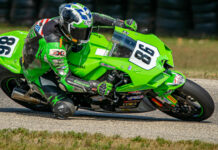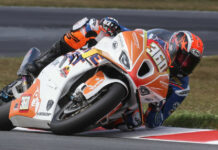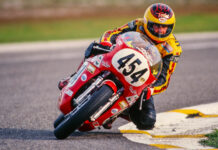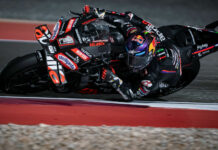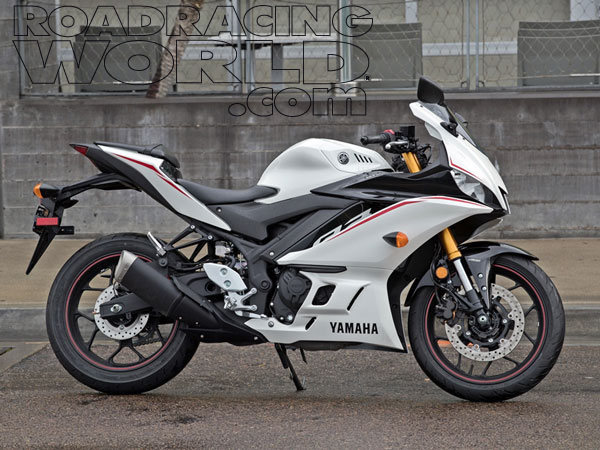Copyright 2019, Roadracing World Publishing, Inc.
More Performance + Same Price = Real Value: Riding Yamaha’s 2019 YZF-R3
By Michael Gougis
Yamaha’s 321cc YZF-R3 jumped right to the sharp end of what was basically a 300cc class when it was introduced in 2015, and for 2019, the company has improved its smallest sportbike even further with new innovations and more contemporary styling.
The YZF-R3 is still powered by the same four-stroke, DOHC 321cc Parallel Twin engine, housed in a steel perimeter frame that is also unchanged. The brakes remain unchanged from previous versions as well.

(Above) Redesigned fairing with LED headlights and air intake that resembles that on the company’s YZR-M1 MotoGP machine.
What has changed is all visible to the naked eye. The first element is the styling, inspired by and designed to emulate the company’s larger sportbikes and racebikes. Similar to the YZF-R6 and YZF-R1 and YZR-M1 from the front, the air intake bears a close resemblance to its larger and faster siblings. The sides of the fairing look similar to the YZF-R6, and the upper triple clamp’s cutouts are designed to emulate the appearance of the MotoGP machine. The windscreen and upper fairing now also look more similar to the larger bikes, and the restyled headlights give the front of the bike a track-only appearance at first look. The tank cover has been restyled as well to help the rider hang on to the bike with a knee while cornering.

(Above) New all-digital dash and clip-ons under the new upper triple clamp.
From the cockpit, it is easy to spot the all-new digital dash. Less obvious are the new handlebars, which are a significant change as the clip-ons are attached under the upper triple clamp and are lower than on the previous model.
The suspension on the YZF-R3 has received a significant upgrade in terms of a set of inverted KYB 37 mm forks with much firmer springing, compression and rebound damping, and matching increases in springing and rebound at the rear – although compression damping is slightly less than on previous models. And nearly as significant is the upgrade in rubber, from Michelin Pilot Street bias-ply tires to Dunlop GPR-300 Sportmax radials.

(Above) Even in cold, damp-to-wet conditions, Yamaha’s changes to the suspension and tires on the 2019 YZF-R3 were evident and clearly for the better. Photo by Brian J. Nelson.
Yamaha turned a group of journalists loose on the roads of southern California for a brief introduction to the new machine. The good part was the CHP escort, which made for a much-less-scary photo shoot experience. The bad part was the very cold weather and roads that ranged from soaking wet to patchy damp, limiting the ability—or desire–to push the machine.
Still, a few things were immediately evident. The good parts of the YZF-R3 remain good, with an engine that is happy to spin with little vibration. Braking is strong, with solid and direct feel at the lever. Handling is better with the new forks and tires.
Despite all of the improvements, the MSRP remains the same as it was for the 2018 model, starting at $4,999.
Watch for a detailed review and evaluation of the 2019 Yamaha YZF-R3 in an upcoming issue of Roadracing World & Motorcycle Technology magazine.


